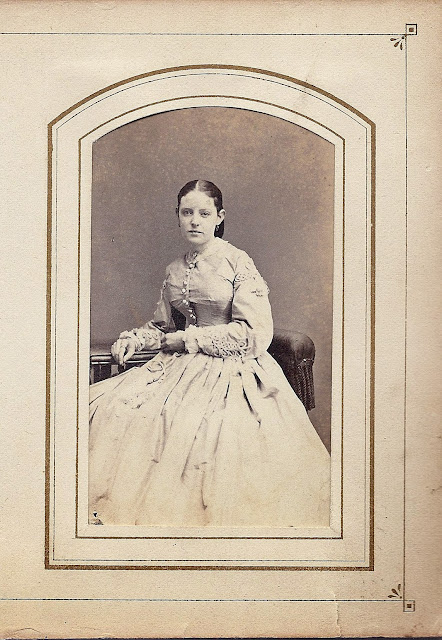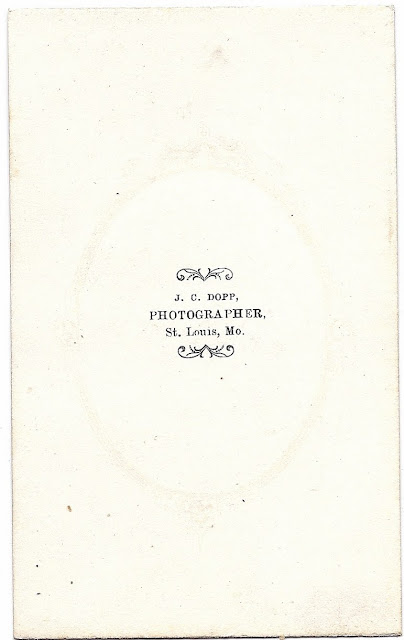One branch of my husband's family emigrated from Ireland to St. Louis, Missouri by way of Canada in the 1840s. We inherited a photo album full of cartes de visite, many of which have revenue stamps on the back, dating them to the civil war era. Unfortunately, none of the individuals are identified, although in many cases the photographic studios are printed on the back. So, if you have ancestors who were neighbors of the Andrew Wilcox family of St. Louis, maybe you will find them in this collection:
More later…..
More later…..





























